Resonance, Christiaan Huygens, and the Longitude Problem: An Interview with Armin Strom’s Claude Greisler
Going deeply technical on one of the most fascinating phenomena in physics and watchmaking.
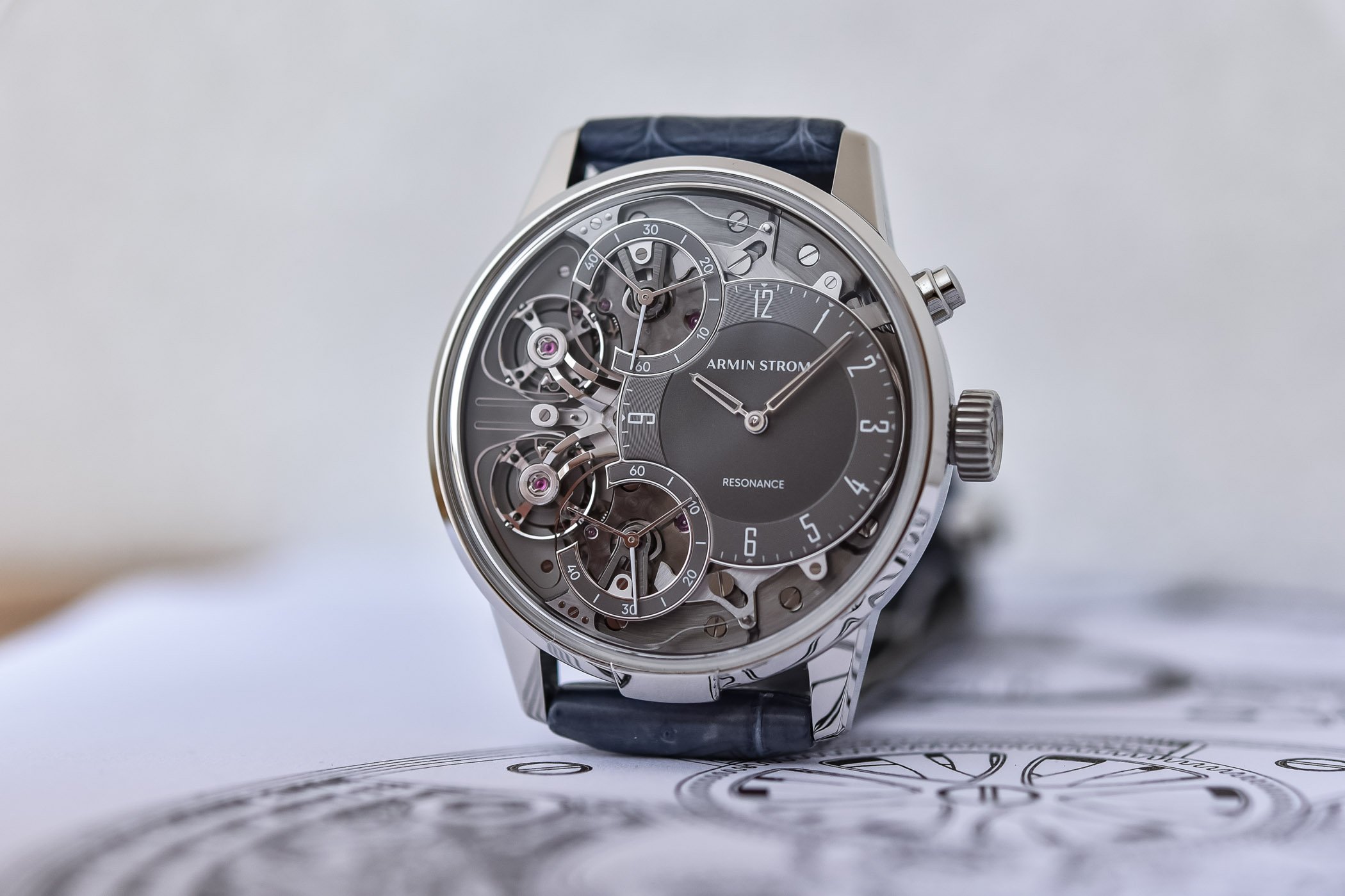
Claude Greisler is the co-founder and Head Watchmaker at Armin Strom, one of the few brands producing resonance watches. His early background as a restorer of vintage timepieces led him to explore the history of Resonance in the context of the Longitude Problem and ultimately to develop his own line of Resonance watches under the Armin Strom brand. But before presenting one of the best and most pragmatic examples of a watch that uses resonance to improve accuracy, there was an impressive amount of research required. And today, we talk with Claude in order to understand precisely what resonance means in watchmaking.

How would you describe the phenomenon of “Resonance” in the context of watchmaking?
“Huygens Synchronization” as it is known in scientific circles is called “Resonance” in the context of watchmaking. By housing two movements in a single case, a skilled watchmaker can generate the Resonance phenomenon to enable the balance wheels of both movements to influence and regulate each other and thereby become synchronized in all positions in what scientists call “shared modes of motion.” The phenomenon is generated and maintained via the transmission, reception and mutual sharing of almost imperceptible vibrations between those two balance wheels. Depending on movement architecture, Resonance can either prevent or remediate balance wheel oscillation errors that are attributable to ordinary or extraordinary wrist motion, gravity, temperature changes and shocks. The benefit of having those balance wheels oscillate in a shared state of Resonance can be improved timekeeping, chronometric consistency, or both. By “chronometric consistency” I mean that the timepiece can be expected to gain or lose precisely the same number of seconds every day. And again, depending on the technical approach of the watchmaker, the Resonance phenomenon can be maintained consistently using a predictable method for maintaining that vibrational interaction between the two balance wheels – as it is the case in an Armin Strom timepiece – or intermittently, wherein the balance wheels can be expected to drift in and out of Resonance. In that situation, the balance wheels can be expected to actively “lure” each other back into a state of Resonance and ultimately contribute to better timekeeping – while of course foregoing chronometric consistency.
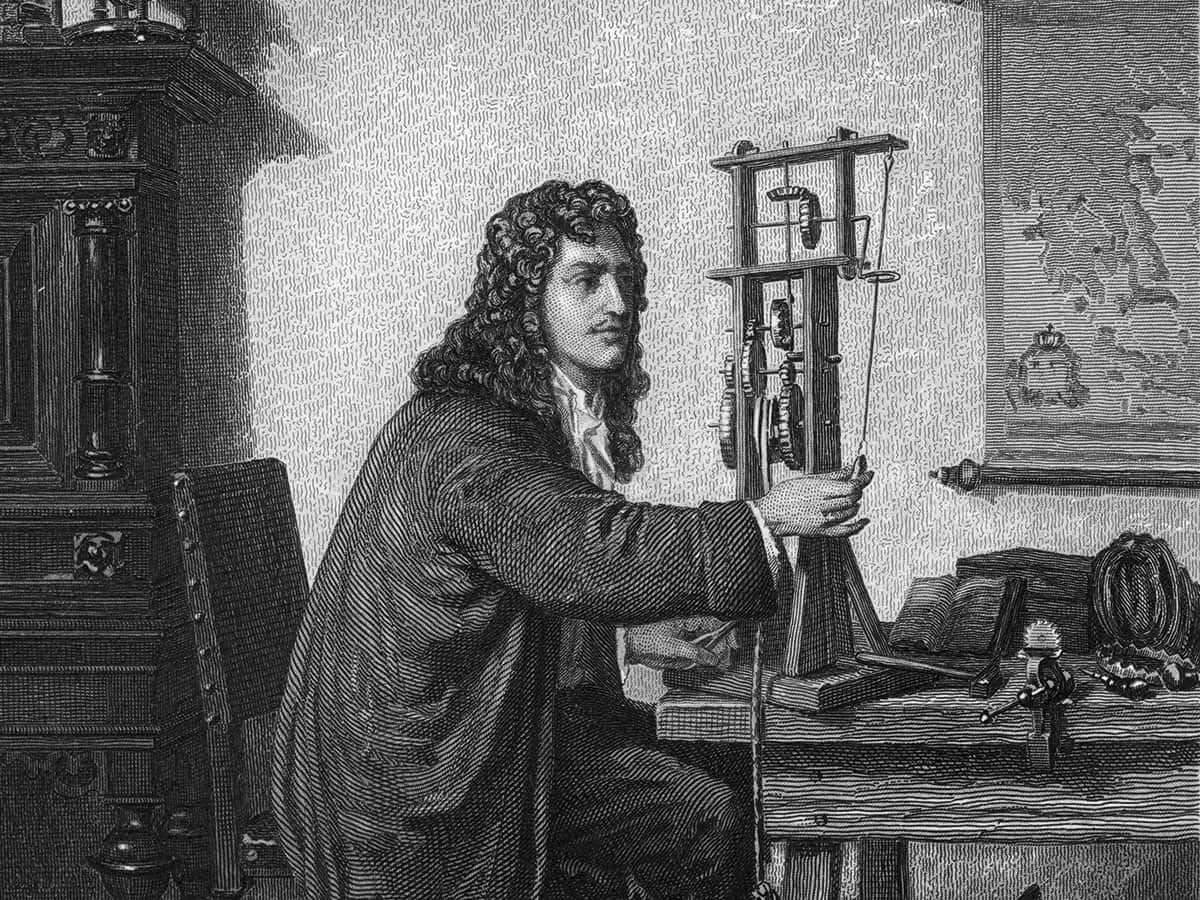
Can you tell our readers a bit about Christiaan Huygens and his importance in our discussion about Resonance?
Christiaan Huygens (1629-1695) was a Dutch mathematician, physicist, engineer, astronomer, and inventor. “In the period between the death of Galileo (1564-1642) and the rise to fame of Isaac Newton (1642-1727), renowned Dutch physicist Christiaan Huygens (1629-1695) stood alone as the world’s greatest scientific intellect.” That’s actually a quote from encyclopedia.com. Huygens is remembered as the first theoretical physicist and the father of modern mathematical physics.
In watchmaking history, Huygens is most remembered for having invented (and ultimately commercialized) the pendulum clock, which was the most accurate timekeeper in its time – and for having discovered the Resonance phenomenon and identified its potential as a game-changer for better mechanical timekeeping. In 1665, Huygens observed the phenomenon while recovering from an illness. He noticed that two of his large pendulum clocks sitting on a wood beam in his room were beating in synchrony and that they would return to this pattern even if they were disturbed or stopped, regardless of how far apart in time they were started. That phenomenon was what we now know to be Resonance.
When I set out to create my own Resonance timepieces, I didn’t want to simply recreate what others were doing – or to differentiate what I was doing simply by virtue of highlighting the phenomenon by placing it on the dial side of my timepieces. I wanted to go deeper and actually solve the problem that some of history’s greatest watchmakers hoped to solve by leveraging Resonance, that being the Longitude Problem. Achieving that required me to look back further than Breguet and start at the beginning of the Resonance story with Christiaan Huygens and his experiments.
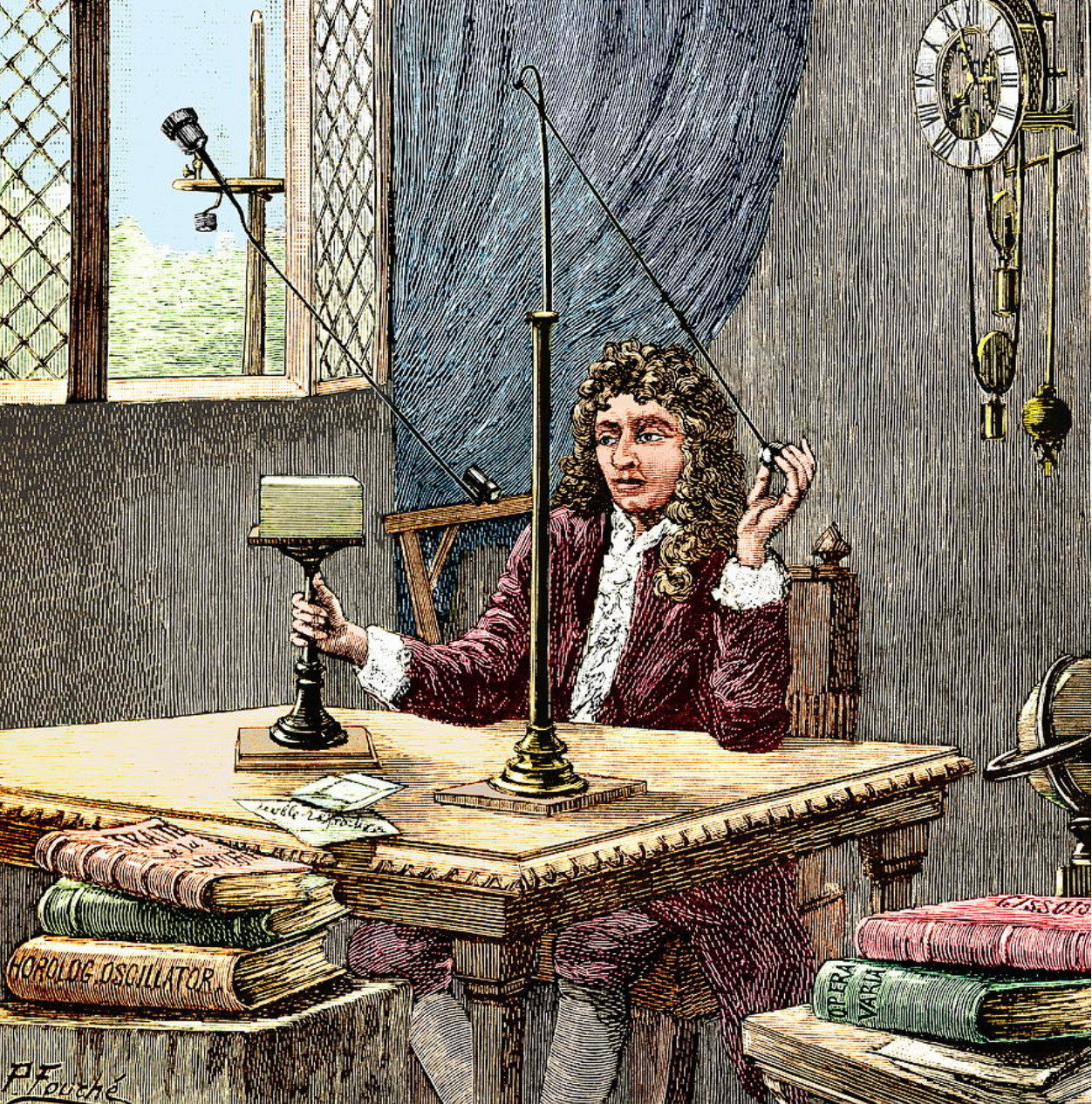
What was the “Longitude Problem” and what is its historical connection to watchmaking?
The Longitude Problem was a challenge faced by sailors and navigators for centuries, which involved determining a ship’s exact longitude at sea. The problem was particularly challenging because longitude can’t be calculated by observing the position of the stars, unlike latitude which can be calculated relatively easily using the sun, stars and the altitude of the North Star. A precise measurement of time representing the exact time at the port of departure or Greenwich mean time was required to calculate longitude. For example, an hour of time difference between local noon when the sun is at its highest point in the sky and Greenwich Mean Time corresponds to 15 degrees of longitude. The problem was, as Sir Issac Newton once noted, that “by reason of the motion of the Ship, the Variation of Heat and Cold, Wet and Dry, and the Difference of Gravity at different Latitudes, such a watch hath not yet been made.”

Why did finding a solution to the Longitude Problem matter so much?
While the benefits associated with finding a reliable method for determining longitude were multi-faceted, the most compelling reason was the pressing need for more accurate maritime navigation. Between 1550 and 1650, one in five ships was lost between Portugal and India. The issue reached a peak in the 17th century when imperial conquest and colonialism relied on the sea trade.
Less well remembered is that there were also practical political concerns at stake, including an impetus for avoiding war. Consider the conflict between Spain and Portugal in the 16th century over the Maluku Islands. A treaty between Spain and Portugal used a line of longitude in the Atlantic to divide the colonies between them; but it was unclear where the line actually fell. (So Spain and Portugal both claimed that the Maluku Islands were on ‘their side’).
How did the Longitude Problem affect three centuries of watchmaking?
Starting in the late 1500s, Europe’s major seafaring nations offered enormous financial incentives to the public in the hope of finding a solution to the Longitude Problem. Huge financial rewards were offered by Spain, the Dutch Republic, England and France among others – as well as many private scientific institutions – enticing some of the greatest watchmakers in history to develop a mechanical ‘Sea Clock’ that could accurately keep time with chronometric consistency. They were challenged to overcome what Sir Isaac Newton described as “the Motion of the Ship, the Variation of Heat and Cold, Wet and Dry, and the Difference of Gravity at different Latitudes.” Those huge rewards and the potential for commercializing a solution lured many generations of watchmakers to direct their attention to the Longitude Problem. That of course included Huygens, who was as much an entrepreneur as he was a scientist.
Those huge rewards and the potential for commercializing a solution lured many generations of watchmakers to direct their attention to the Longitude Problem. I can give you some granular detail, but many of your readers might prefer to skip my historical review. Philip II of Spain was the first to offer a reward for a solution in 1567. His son, Philip III, increased the reward in 1598 and added the promise of a permanent pension. Two years later, Holland offered an even larger reward. None of these prizes produced a solution. The British initially tried a different approach. The Royal Observatory in Greenwich was founded in 1675 and it was established explicitly to address the longitude problem. Eight years earlier, in 1667, the Paris Observatory had been established with a multi-purpose mission that included the Longitude Problem – and to that end, Christiaan Huygens was retained under the auspices of the French Académie des Sciences.
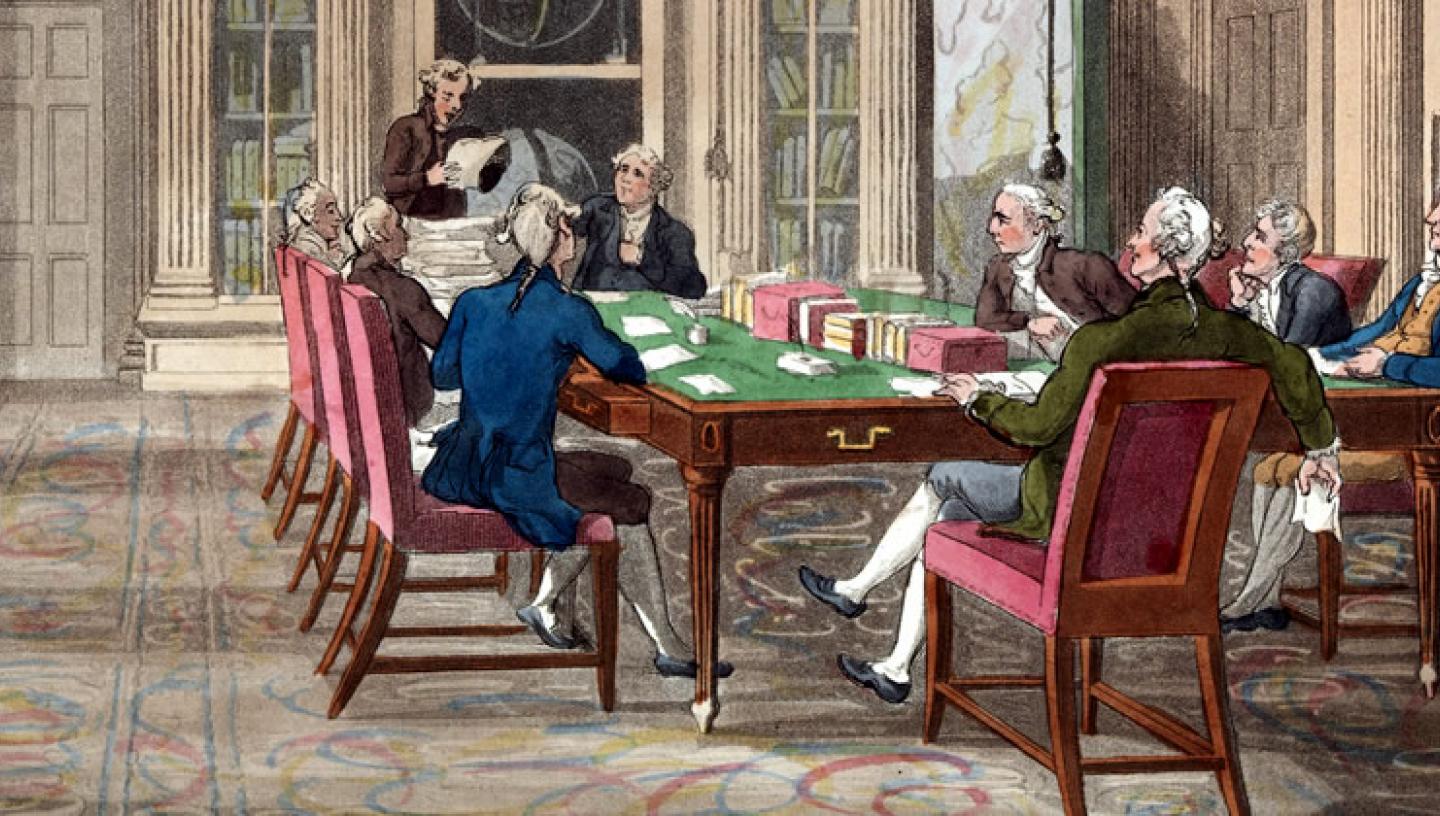
Then, in the early 1700s, a series of maritime disasters occurred, including the spectacular wrecking of four Royal Navy warships in the Isles of Scilly in 1707; where as many as 2000 sailors lost their lives. The disaster had been attributed in large part to the inability of navigators to calculate their positions. In response, the British Longitude Act of 1714 was later enacted. It offered three rewards for solutions based on levels of accuracy – as had been recommended by Sir Isaac Newton. It offered £10,000, equivalent to £1.48 million today, for a method that could determine longitude within 1 degree at the equator, which was equivalent to 60 nautical miles or 110 km. It offered the larger sum of £15,000, equivalent to £2.22 million today, for a method that could determine longitude within 40 minutes; and £20,000, equivalent to £2.96 million, for a method that could determine longitude within 30 minutes. To pursue these goals, the parliamentary committee also established the Board of Longitude. Its panel reviewed proposed solutions and was given authority to grant up to £2,000 advances for promising research projects that might have led to a solution. The Board of Longitude lasted for more than 100 years. When it was officially disbanded in 1828, more than £100,000, almost £15 million today, had been disbursed. Add the incentives of patent protection and commercialization opportunities and is it any wonder that three centuries of watchmakers pursued a solution? Knowing all this, I have to wonder whether Breguet and Janvier Antide’s efforts regarding Resonance were based on similar motives.
What’s the connection between The Longitude Problem and Huygens’ discovery of Resonance?
In 1665 Huygens discovered that two pendulum clocks, when hung from the same wood beam, will always oscillate in synchronicity. He described his discovery of the phenomenon of Resonance as “an odd sympathy”. He’d been experimenting with pendulum clocks that he’d built himself while searching for a solution to the Longitude Problem when he became ill and was temporarily bedridden. From his sick bed, he noticed that two pendulum clocks, which he had hung on the same wood beam in his bedroom, appeared to swing together with the same synchronicity regardless of their starting position. Huygens “hoped to exploit this effect to solve the longitude problem.”
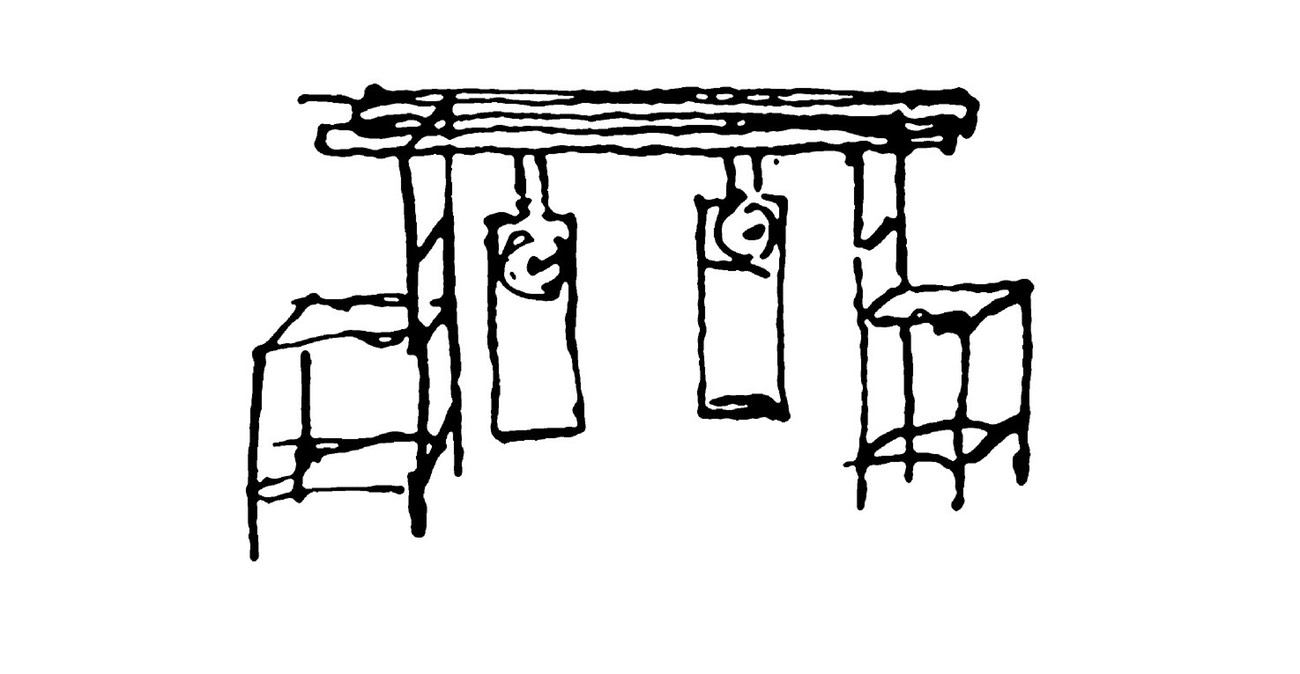
How do we know that?
Well, besides the documentation in various physics journals that say so (Editor’s note – for example here), we also have the evidence of history.
In an effort to develop a ‘sea clock’, Christiaan Huygens patented the first working pendulum clock in 1656 and later devised the balance spring as a watch regulator. Huygens initially believed that the regular motion of a pendulum clock could be used to accurately measure time at sea and therefore determine longitude. In 1664, the year before his discovery of Resonance, Huygens tried to prove that his pendulum clocks could solve the Longitude Problem, so he conducted an experiment by placing two of these clocks on a ship under the command of British admiral Robert Holmes. The purpose of having two pendulum clocks was to ensure that if one stopped working due to shocks attributable to rough seas, the other would still be running.
So that’s why there were two clocks on that wood beam that led to Huygens’s discovery of Resonance?
It certainly seems that way. Long story short: at some point, the ship ran out of drinking water but managed to figure out their vessel’s location and make it to safety using Huygens’ clocks. While his clocks had proven to be successful in that particular case, it soon became clear that the effect of sea turbulence would ultimately affect the motion of the pendulums, such that they couldn’t be relied upon. Moreover, the unpredictability of that motion meant that two clocks wouldn’t display the same time – so which one should be believed? It seems obvious that Huygens would have been vexed by the problem of keeping his two clocks synchronized – particularly since he had already begun efforts to commercialize his solution. His consolation prize was that his Pendulum clocks were soon recognized as the best timekeepers for use on land. Demand for his clocks quickly materialized among wealthy homeowners and he began working with several Dutch clockmakers on a commercial basis. Then, shortly after it had become clear that his pendulum clock couldn’t work accurately on a ship’s deck in rough seas, and perhaps not coincidentally, Huygens discovered a phenomenon of nature that suggested the possibility of keeping two clocks synchronized in challenging environments. In 1665, while temporarily ill and lying in his sick bed, Huygens noticed that the pendulums of his two clocks had in fact become synchronized while resting on a shared wood beam. And the rest, as they say, is history. Huygens postulated that Resonance is caused by small vibrations, but the necessary mathematics that would have enabled him to prove that didn’t exist in the 1600s.
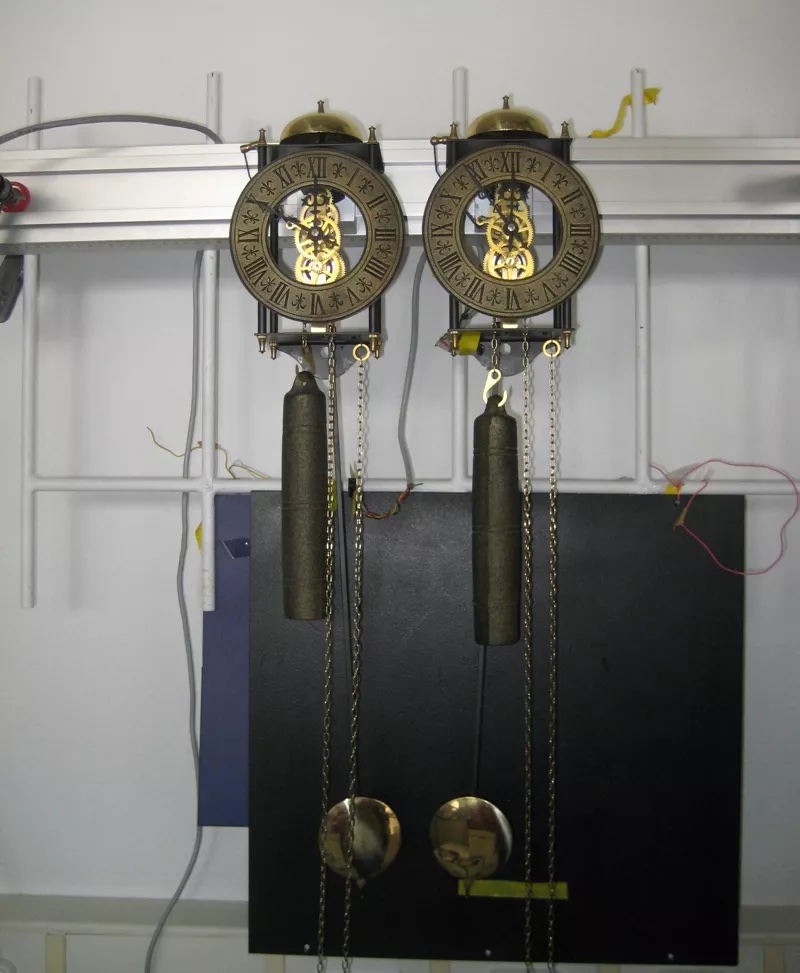
Do we now know that to be true?
Multiple scientific experiments conducted at various universities have since confirmed that Huygens was right. One such study, which I think is particularly relevant for watchmaking, was the one conducted in 2016 by Henk Nijmeijer, a professor of Dynamics and Control at Eindhoven University of Technology and a Huygens enthusiast. He worked with Mexican colleagues to recreate Huygens’ wood beam experiment and conduct a thorough study on the phenomenon, now known as Huygens synchronisation. Their findings, published in the journal Scientific Reports – a sister publication of the prestigious Nature journal – absolutely confirmed Huygens’ original explanation but also served to “consign to bin the theory that the synchronization was attributable to acoustic pulses.” It seems that Breguet himself reached that same conclusion two hundred years earlier. In “The Art Of Breguet” George Daniels wrote that Breguet had “fitted no. 2788 with a thin steel barrier between the balances to rule out the effects of turbulence on the balances.”
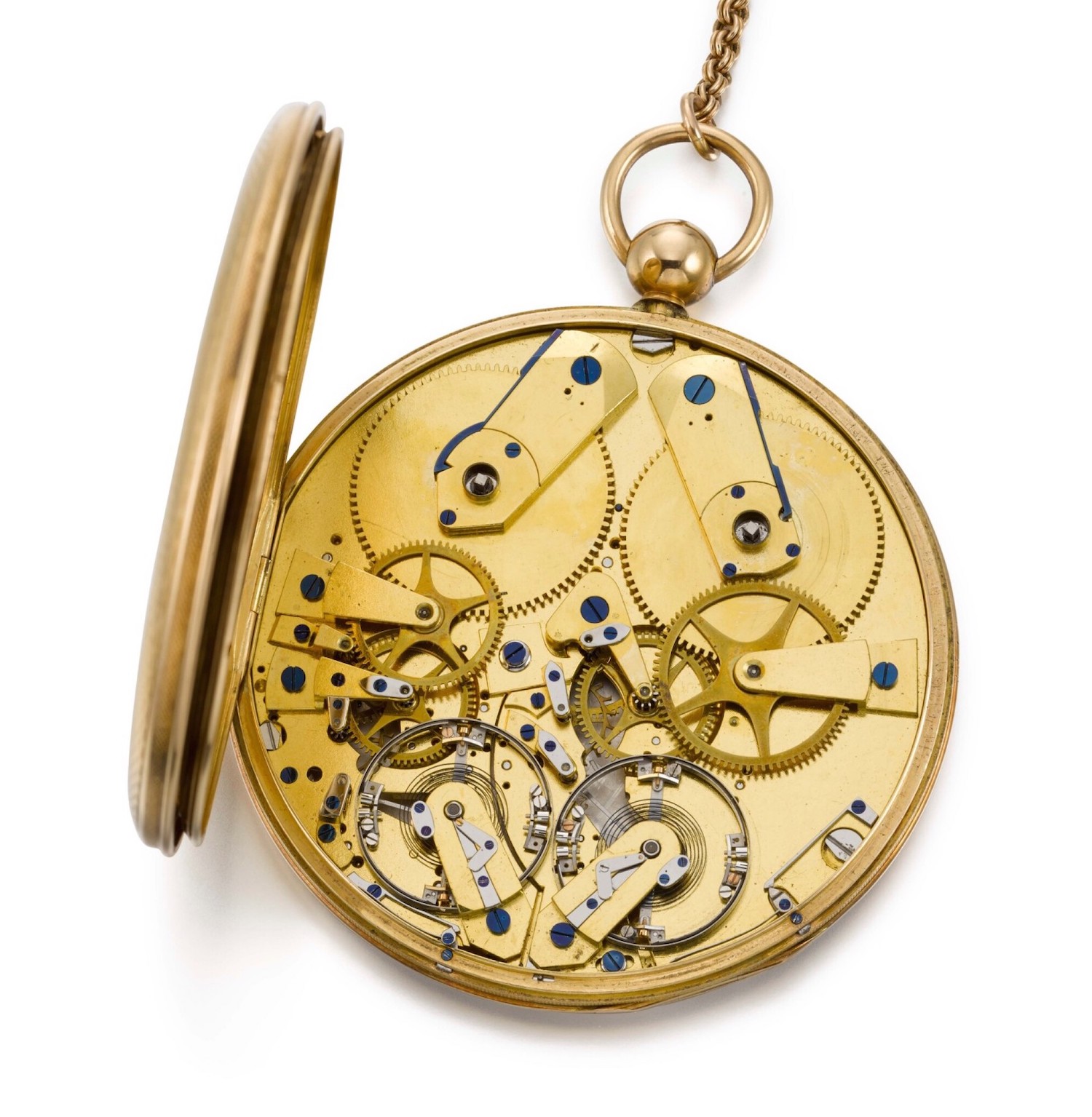
So various watchmaking theories regarding Acoustic Resonance have been definitively disproved?
Apparently so. Moreover, having established that the transmission of vibrations between balance wheels is a pre-requisite for the Resonance phenomenon to occur, the inescapable conclusion must be that every Resonance timepiece relies on some sort of oscillation bridge for its two balance wheels to share such vibrations.

Given that, how is Armin Strom’s approach to Resonance different from other approaches to achieving Resonance in a wristwatch?
At the root, our approach to Resonance is different from any other in that it deploys a ‘built-for-purpose’ third oscillator instead of relying on vibrations being transmitted through a legacy part in the movement. All Resonance watches rely on what scientists call shared modes of motion. The key difference with our approach lies in the resilience of our oscillating bridge and its ability to consistently maintain a Resonance state between two balance wheels when they’re impacted by gravity, wrist movement or shocks – which in other methods would result in oscillation rate deviations. Our patented clutch spring, which took three years to develop, proactively prevents such oscillation-rate deviations rather than just remediating them. With other approaches, the main-plate or some other part assumes the role of an oscillating bridge. But because it’s not built for purpose, that oscillation bridge won’t be particularly resilient and the balance wheels will tend to ‘drift’ in and out of Resonance in response to wrist movement and gravitational forces. Where other methods will remediate that deviation over time by exerting influence to lure the balances back into a state of Resonance, the inherent resilience of our method actively prevents such deviations in the first place.
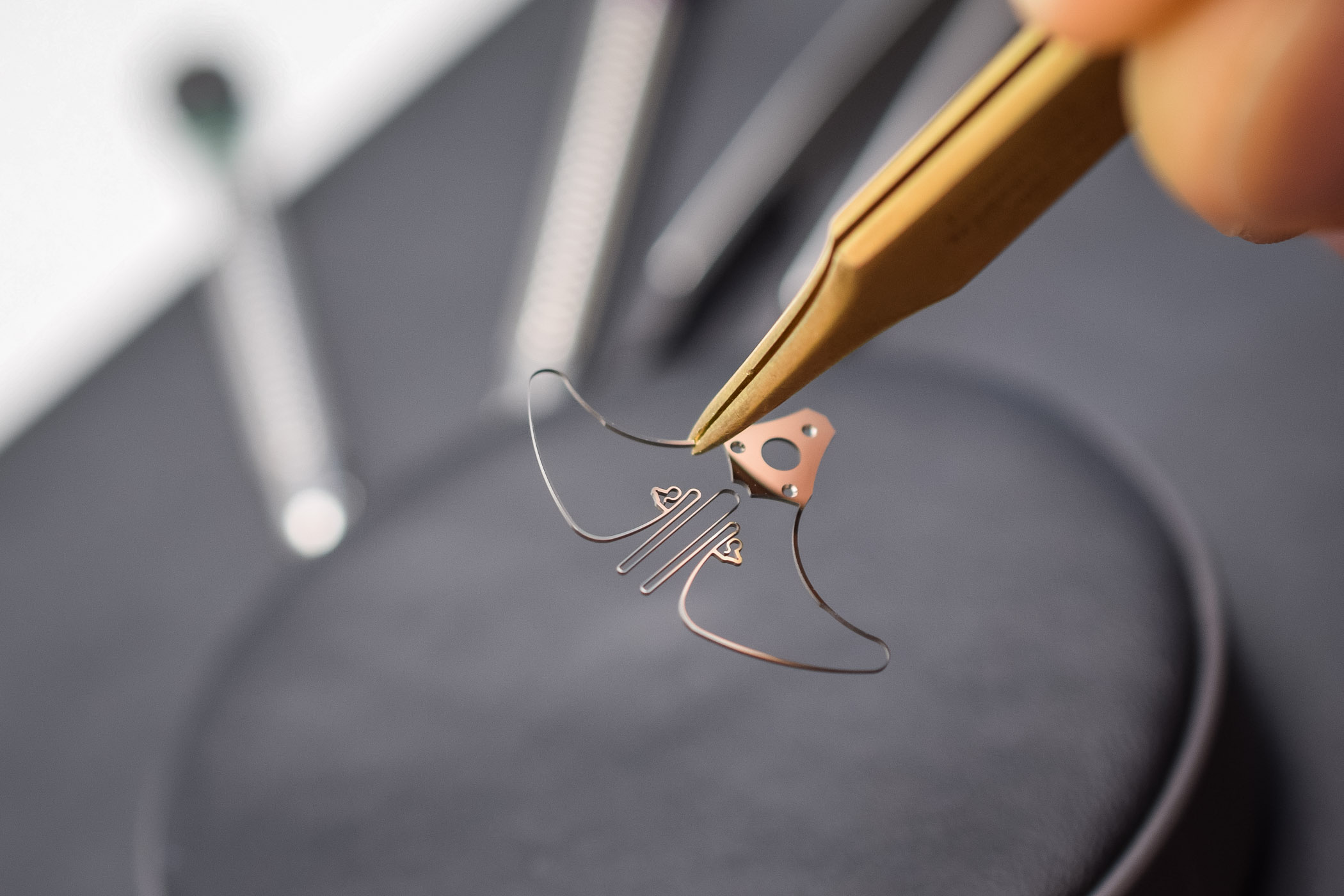
Our approach enables a consistent state of Resonance to be maintained; which both improves timekeeping accuracy and achieves chronometric consistency. Since our Resonance watches predictably gain or lose exactly the same number of seconds every day, it really epitomizes the solution to the Longitude Problem that Huygens hoped to achieve. Our Resonance timepieces are the only ones that you can say that about.
Given that John Harrison is credited with having solved the Longitude Problem with his Marine Chronometer in the 18th Century, particularly with his insanely accurate H5, why was it important to you to solve that same problem via Resonance?
With the historical development of the Marine Chronometer and the modern availability of GPS, it’s fair to wonder why it mattered so much to me – but a good analogy is that the iPhone didn’t lead us to abandon chronographs either. As a watchmaker, knowing that my greatest watchmaking idols had wrestled with the problem over hundreds of years in a great many competitions, it mattered quite a lot. I had a completely different goal than other modern watchmakers who’ve experimented with Resonance – and it required an entirely differentiated technical solution.
From a historical perspective, from the perspective of Huygens, and certainly from my own, the real challenge of Resonance was to maintain the phenomenon with sufficient resiliency to provide the necessary chronometric consistency – and to thereby deliver on the potential for Resonance to solve the Longitude Problem.
Does the use of your proprietary clutch spring imply that your Resonance watches maintain some sort of “Forced Resonance”?
Not at all. But it’s an important question. Whether you rely on a main-plate or some other part of the movement to act as an oscillating bridge – or if you actually design a built-for-purpose oscillation bridge as we did – it is still shared vibration that initiates and maintains balance wheel synchronization. Our clutch spring doesn’t ‘force’ the balance wheels into synchronization, it’s just a medium of vibrational transmission. Our Resonance is “True Resonance” and is certified as such by the CESM, the Centre Suisse d’Electronique et de Microtechnique.
I’ve heard you say that your Minute Repeater Resonance is a ‘technical proof’ – what do you mean by that?
The Minute Repeater Resonance, which Is part of our Masterpiece Collection, was actually intended to be a technical proof of the sustainable resiliency of the Resonance state that our timepieces generate. The fact that it can repeatedly withstand the vibrational anomalies caused by the striking gongs of a minute repeater – and remain in Resonance despite being repeatedly subjected to such vibrations – is prima facie proof of our differentiated resiliency in maintaining a state of Resonance. It was a watch designed to make a point – and it further validates that the challenge of leveraging Resonance to solve the historic “Longitude Problem” has finally been accomplished.
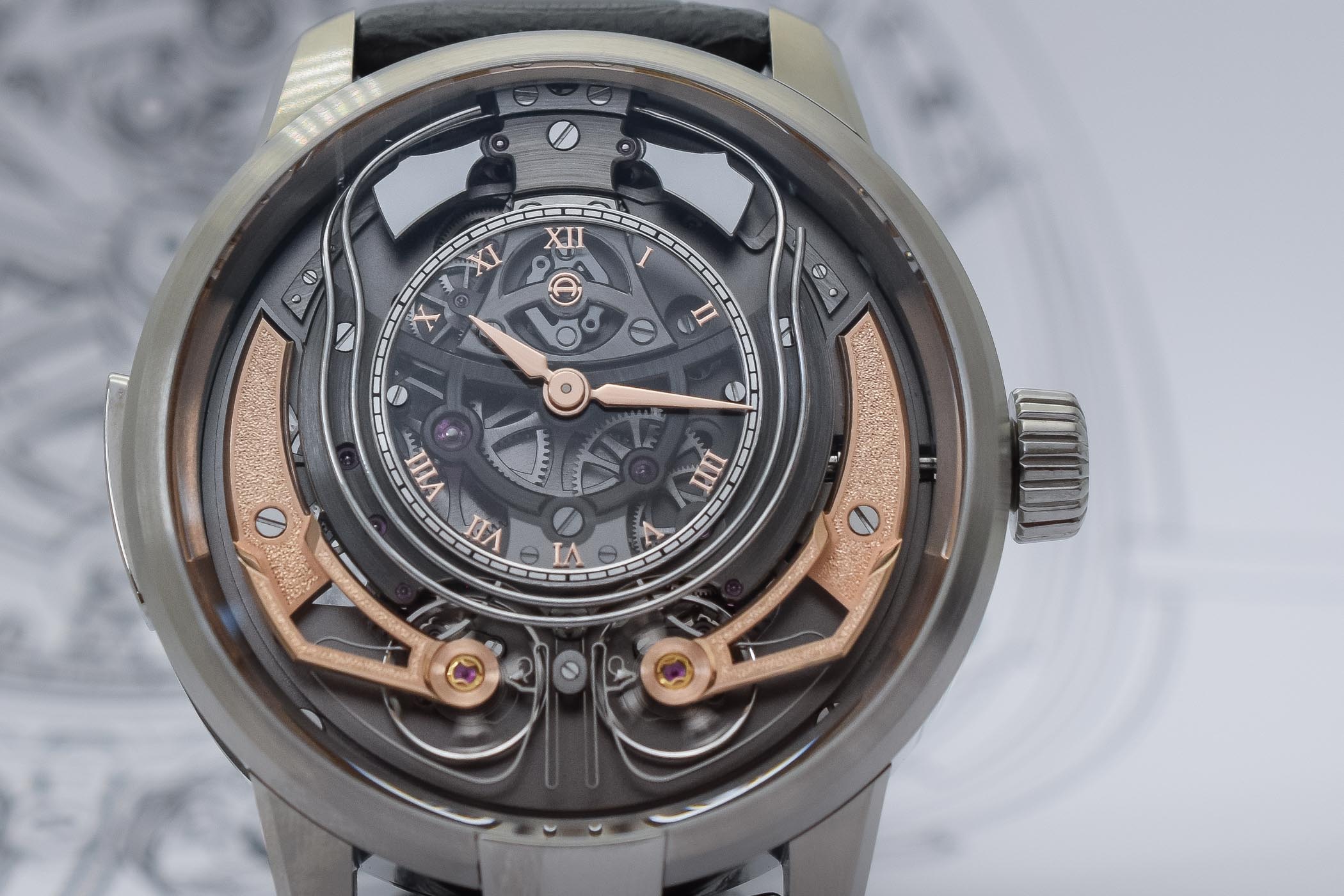
Of course, our Masterpiece Collection represents more than just a delivery method for presenting technical proofs. The Collection exists to fully realize our bold ambition of integrating and elevating aesthetic and mechanical concepts into objects that make people “feel” as much as they make them think. The level of meticulous hand-finishing in those pieces is absolutely top-tier. When you consider the number of parts and interior angles on our Minute Repeater Resonance, for example, it should be clear that the cost of producing it is extraordinarily high. And that’s partly the point. The Masterpiece Series enables our watchmaking to indulge in the purest expressions of our artistic and horological sensibilities while excluding any influence of commercial considerations on design or execution.
How can someone know if any Resonance watch is consistently operating in Resonance or not?
The obvious answer is that you can submit it for testing. A lower-cost option is to simply monitor whether it gains or loses precisely the same number of seconds every day. If all you want is to know is if your watch is operating in Resonance at the moment, the easiest answer is to use your phone to record slow-motion video of your balance wheels in action. That will show you if they are moving together in a synchronized fashion. We locate our balance wheels on the dial sides of our Resonance timepieces and our collectors seem to enjoy that last method more than you might intuitively expect. [laugh].

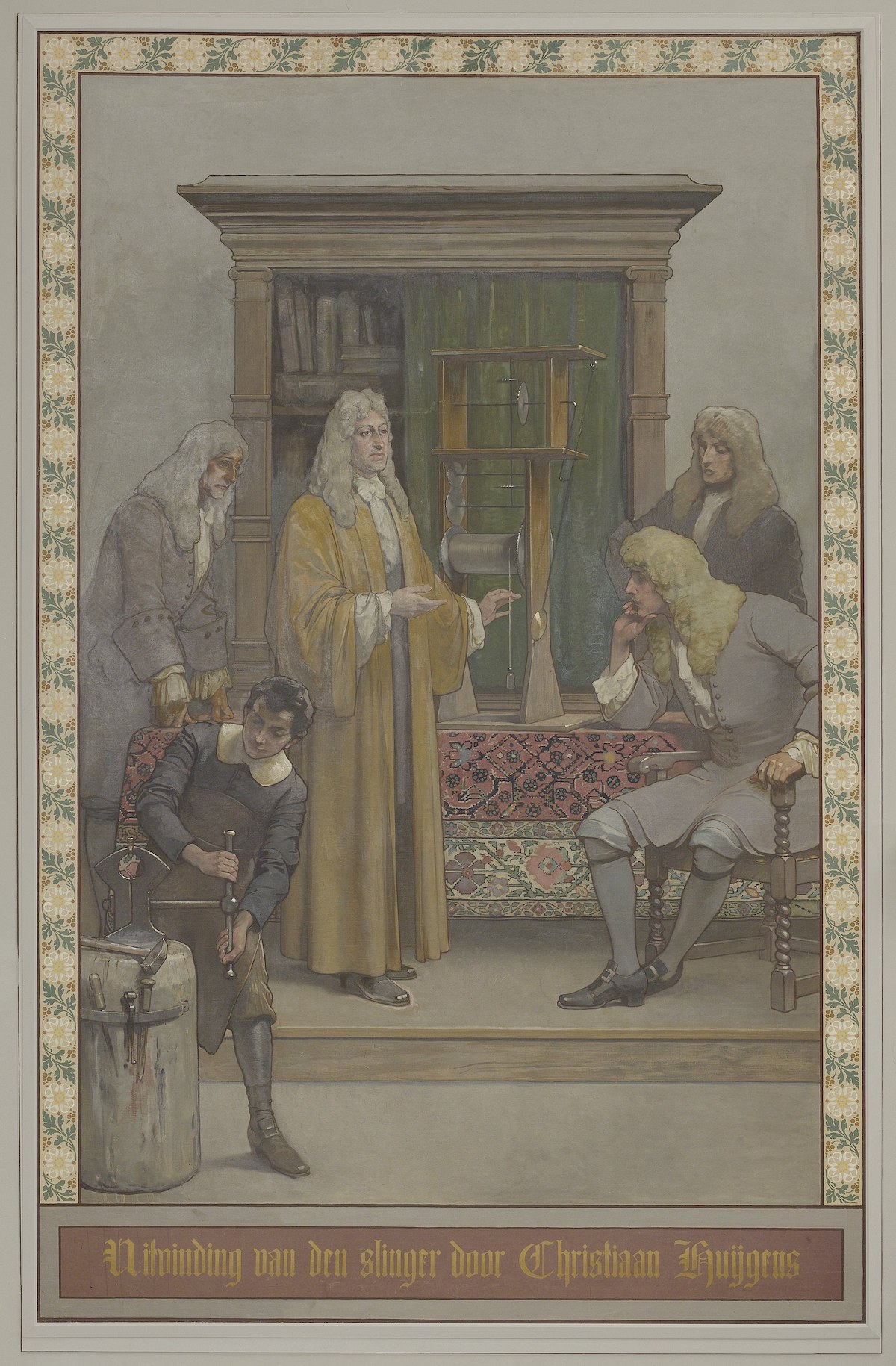

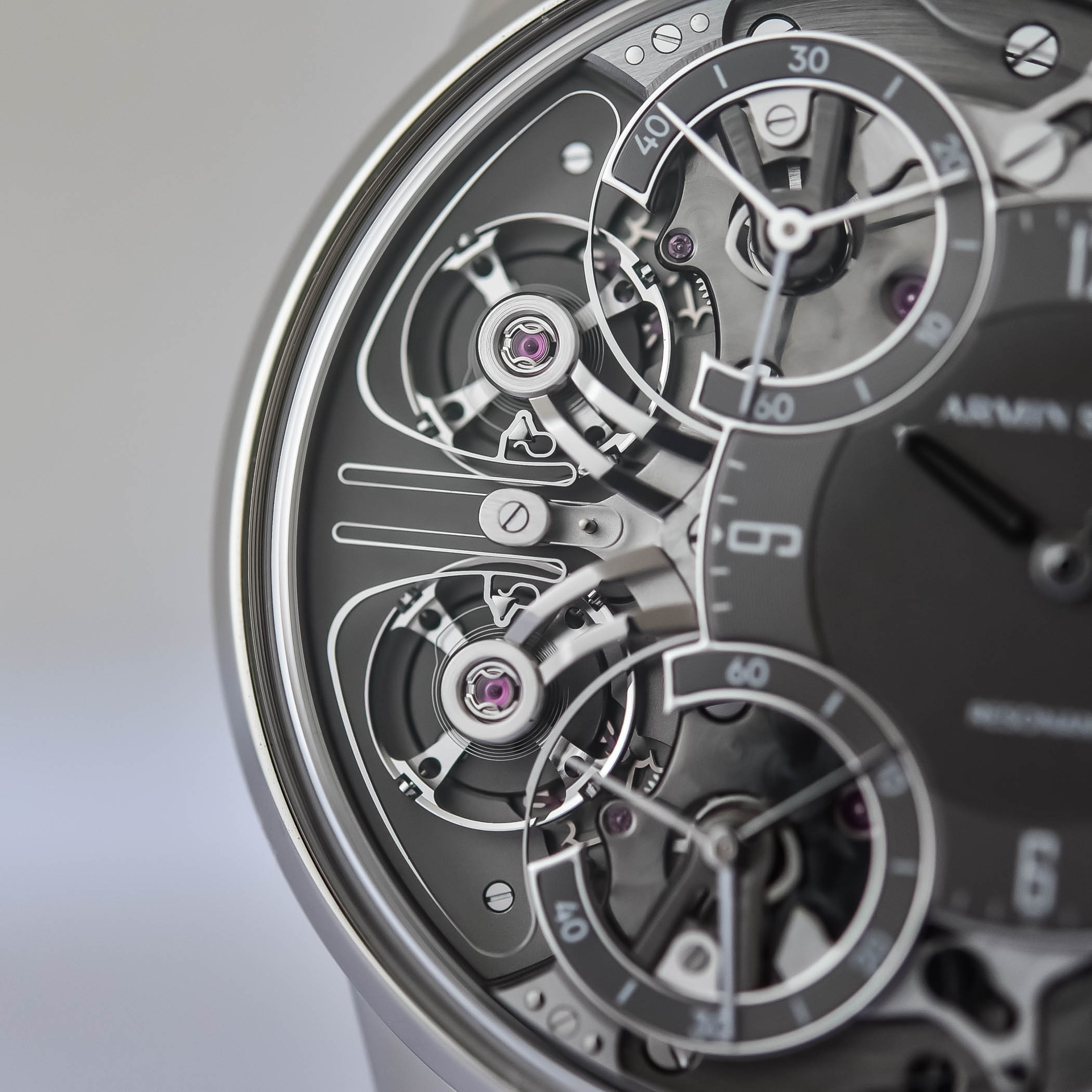

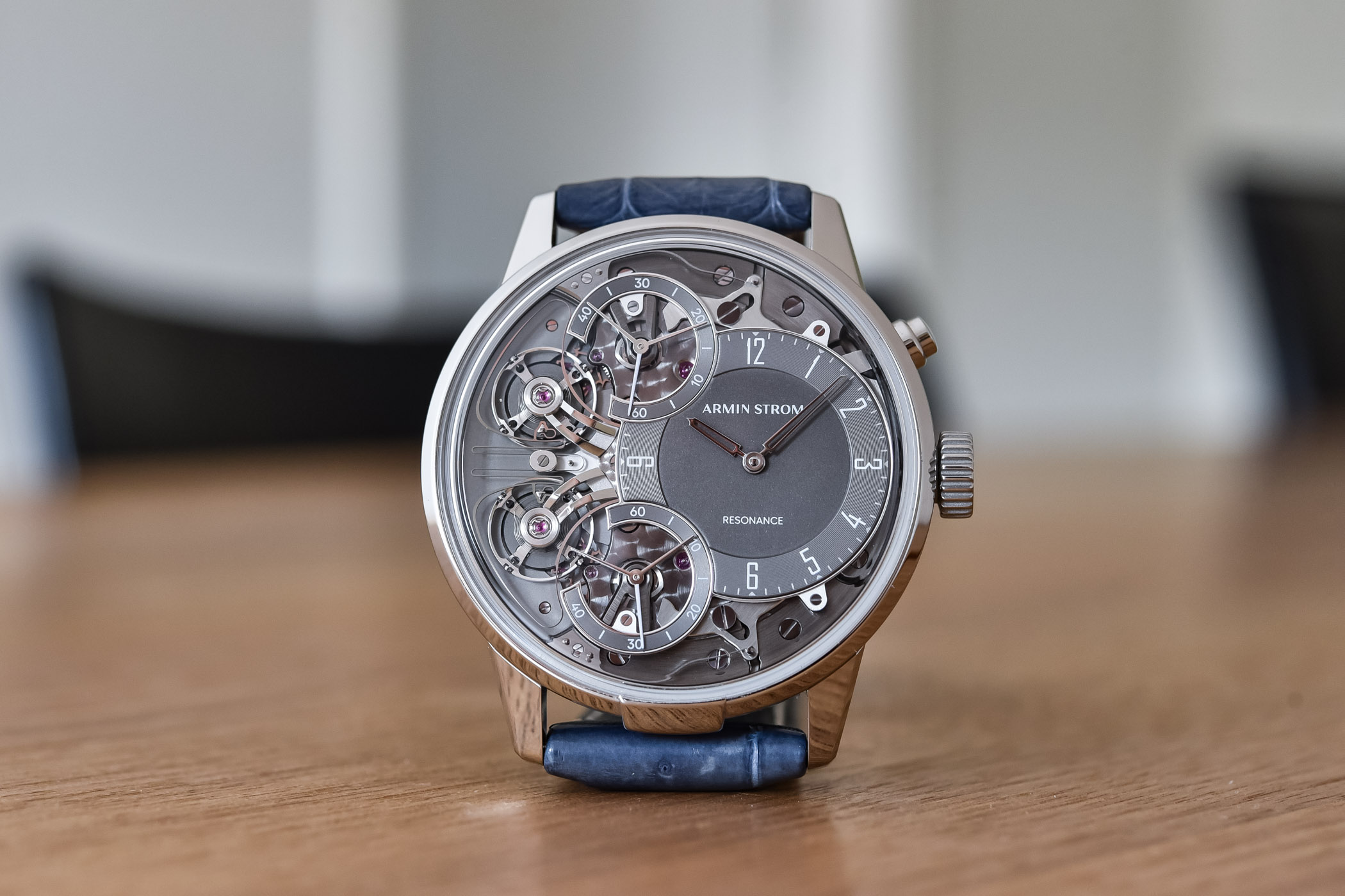



6 responses
For those who are interested in the “longitude problem” I dare to mention here the book -maybe known to many, but not all – “Longitude” from Dava Sobel. There you can read more about Harrison and his endeavors.
I’m surprised that the precision of these watches isn’t mentioned. Are they significantly more precise than normal COSC watches, for example – or Omega’s METAS standard?
Dankeschön, einfach nur Dankeschön, für so viel Info und noch mehr Arbeit.
Thanks so much for this wonderful piece. I really enjoy these in-depth types of articles. A feast for the mind as well as the eyes. More like this, please.😋
@MandoBear – thank you for your kind words 🙂
Thank you for the interesting article. Please correct the island of Sicily to the Isles of Scilly. The catastrophe of 1707 occurred at archipelago off the southwestern tip of Cornwall, England.